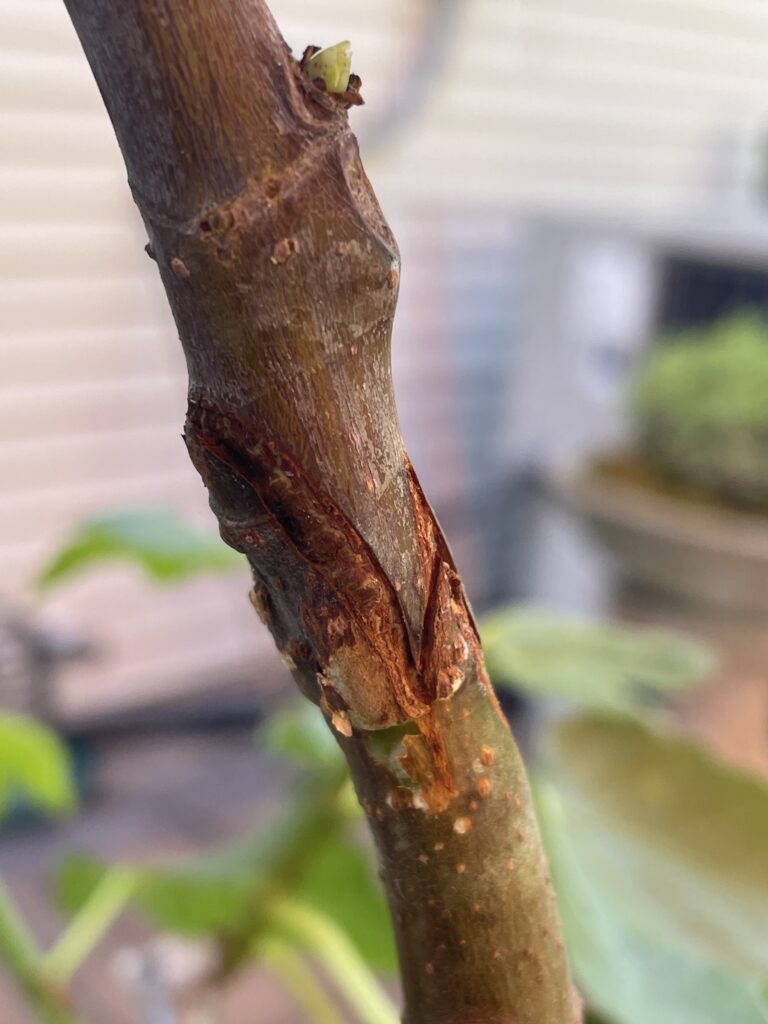Grafting is another common method for propagating fig trees. Here’s a step-by-step guide on how to graft a fig tree:

- Choose the rootstock: Choose a fig tree seedling or another healthy tree of the same or similar species to use as the rootstock.
- Choose the scion: Select a healthy stem from the parent fig tree that has at least one bud and a diameter that is similar to that of the rootstock.
- Make the cuts: Cut both the rootstock and the scion at a 45-degree angle using a sharp, sterile knife. The cuts should be clean and smooth.
- Join the pieces: Place the cut end of the scion into the cut on the rootstock so that the cambium layers (the thin green layer just under the bark) of the two pieces are aligned. Secure the pieces together using grafting tape or wax.
- Monitor the graft: Keep the graft site moist and out of direct sunlight. After a few weeks, new growth should appear at the site of the graft.
- Remove the tape or wax: Once the graft has taken hold and the scion has started to grow, remove the tape or wax.
- Monitor the growth: Keep an eye on the growth of the new tree, and make sure it receives proper care and maintenance.
Grafting can be a bit more complicated than other propagation methods, but it can be an effective way to create a new fig tree that is genetically identical to the parent plant. With patience and care, you can successfully graft a fig tree and enjoy the fruits of your labor.
